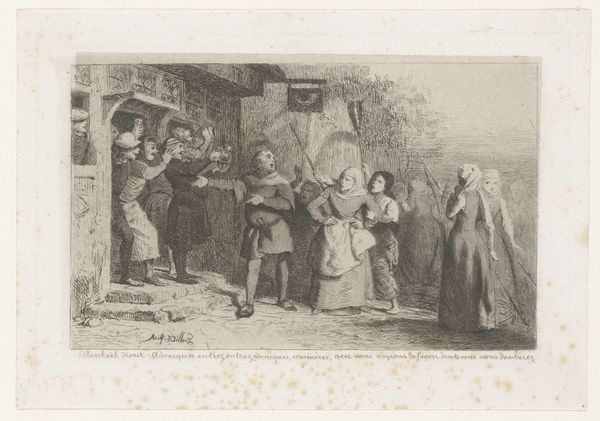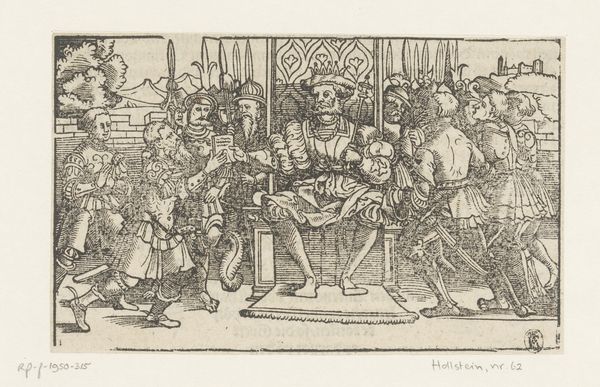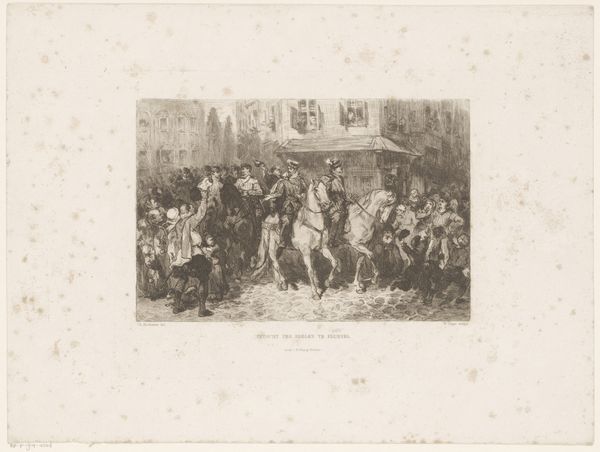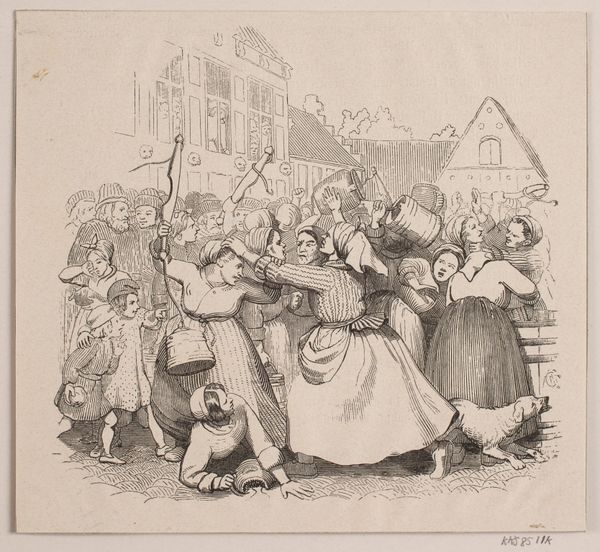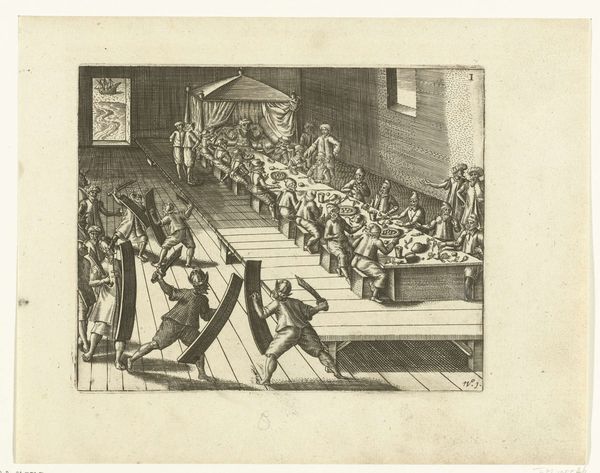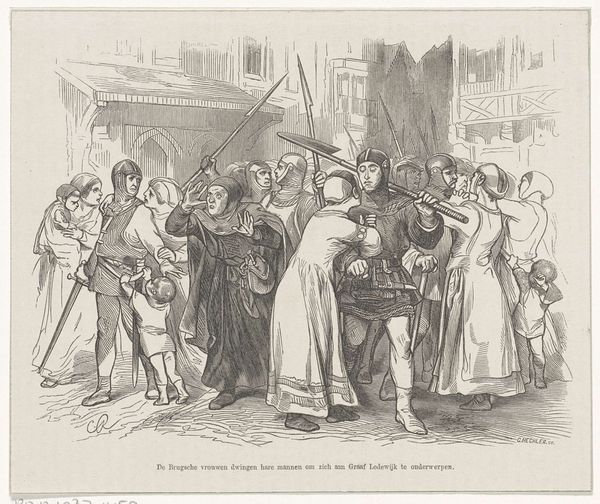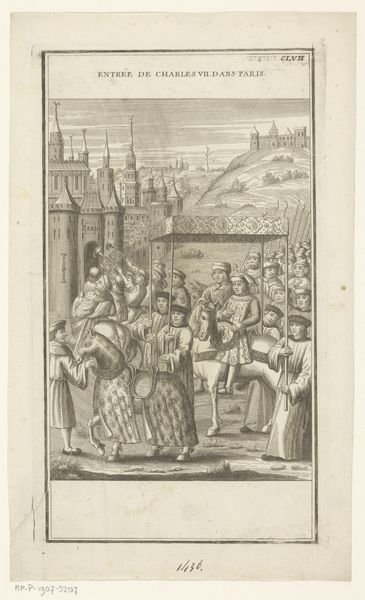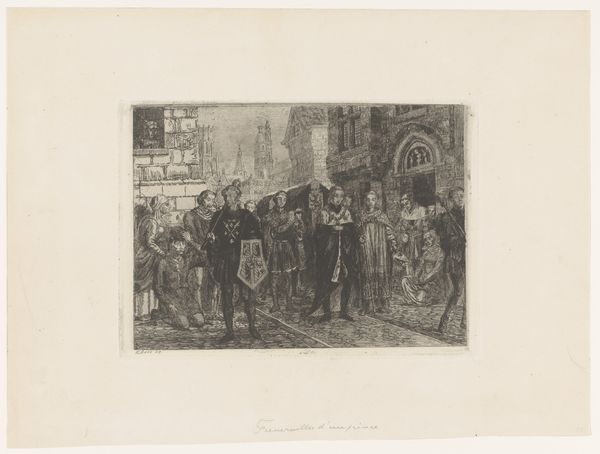
Burgemeester Lancelot van Ursel geeft schepen Cornelis van Spangen het bevel over de burgerwacht after 1863
0:00
0:00
#
pencil drawn
#
photo of handprinted image
#
light pencil work
#
photo restoration
#
pencil sketch
#
light coloured
#
white palette
#
charcoal drawing
#
charcoal art
#
19th century
Dimensions: height 266 mm, width 375 mm
Copyright: Rijks Museum: Open Domain
Jean Baptiste Pierre Michiels made this print, Burgemeester Lancelot van Ursel gives schepen Cornelis van Spangen the command of the civic guard, using etching in the 19th century. The scene depicts a formal transfer of power within the civic guard, a historically important institution. The image constructs meaning through its detailed depiction of clothing and setting, referencing the social hierarchy and civic duty of the time. Made in 19th century Belgium, the print reflects the nation's interest in its own past. Belgium had only recently gained its independence and was actively constructing a national identity, often through romanticized depictions of its history. Civic guards played a role in securing independence so were seen as figures of national pride. The scene idealizes social order and civic responsibility. Art historians rely on a range of primary and secondary sources to fully understand artworks like this, including historical documents, political theory and cultural studies. By considering the social conditions in which art is produced, we can better understand its complex relationship to society.
Comments
No comments
Be the first to comment and join the conversation on the ultimate creative platform.





